Mick Thomson and Jim Root talk Slipknot, Stone Sour and more...
Plus Slipknot's greatest riffs
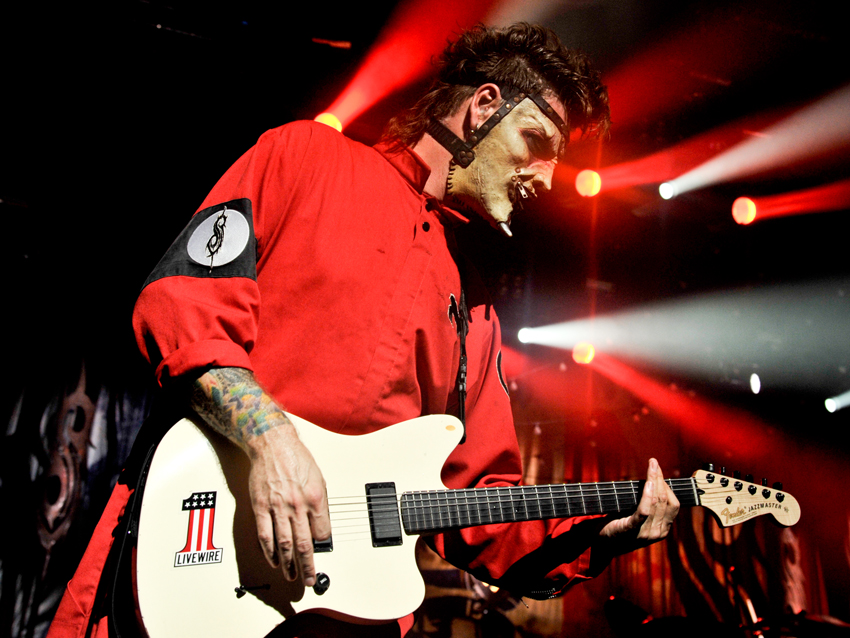
Mick Thomson and Jim Root on Stone Sour, riffs and digital vs analogue
In part two of our Mick Thomson/Jim Root double header (find part one here), we're chatting to the pair about the gear, the riffs and the recording techniques that established Slipknot as one of the most successful metal bands in a generation.
Read on for details of the metal megastars' recording process and favourite riffs, and find out where they stand on the digital versus analogue debate...
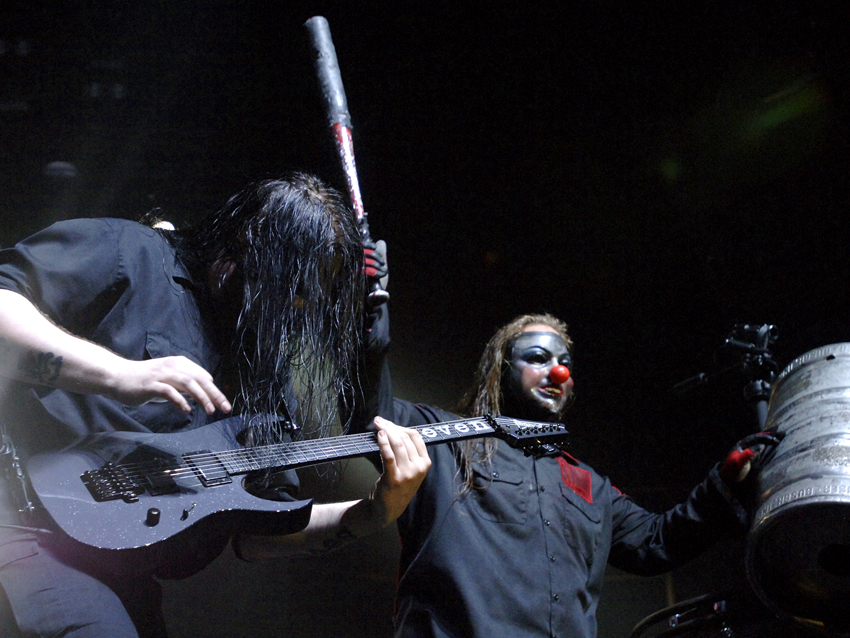
Playing live
Mick: “We don’t run any cabs on stage anymore. Me and Jim are the only two that don’t use in-ears. I love the way it sounds but I’d always get water in there or something.
"We use our monitors on the floor. I haven’t been using earplugs, either. It sounds so tight on stage. With cabs I’d hear my cabs, then Jim’s after mine. The monitors I hear first, the side fills I hear after the monitors, then my cabinets hit, then Jim’s. It ends up with this big mush - it’s a big wash.
"Now we’ve got all that quiet and - oh my God - it sounds like we’re playing a CD up there. It’s cool because I get to hear what my tone sounds like. The first time I saw that was when Coheed and Cambria played in Des Moines. They were using Fractals and you’d hear some drums but they were all on in-ears so didn’t have any monitors. I was on side of the stage so it was the weirdest thing - you would actually hear if somebody farted on stage!"
Jim: “I like to improvise so much live because I get bored playing the same thing over again. It’s like the kid at school that already knows all the answers so doodles all over the paper. I do that a lot live.
"When Paul was alive we’d stand next to each other and I’d hear him shout to me, ‘Shred that shit!’. So I’d do a run or something, just shit like that. That’s what makes live shows interesting - having that 'on the edge of your ability' thing, that’s when special things happen. So many bands play to tracks - what’s the point in coming to see them live if they’re playing to a CD?”
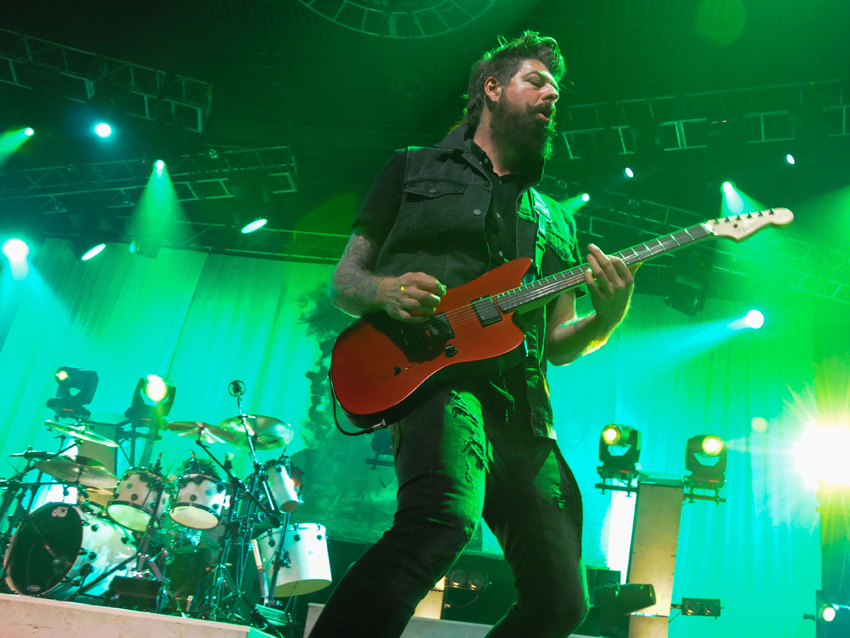
Slipknot vs Stone Sour
With both Slipknot and Stone Sour to juggle (including festival shows this summer at which he played with both bands), Jim’s headspace can get a little crowded. However, it turns out that, when it comes to his setup, things are refreshingly straightforward.
Jim: “All my racks are the same between Slipknot and Stone Sour. The only thing I’ll do is switch out pedals in the GCX system. But it's the same heads, same wireless, same GCX. They have two Orange Rockerverbs, whirlwind channel selector, and Audio Technica wireless systems.
"We did pre-production for Slipknot in Japan and it was the same rack that I used for Stone Sour, but I hit a couple of notes and it automatically sounded like Slipknot. I don’t know if that’s my approach, the bone density of my fingers or my mentality. Whatever it is, I think it’s magic! Because it’s the same guitar, same strings, same pickups, but that magical thing just happens. It’s even the same tunings.
“It can be a bit of a mindfuck for me, though. As a guitar player, artist, songwriter, live musician... whatever role you’re in you’re always trying to improve. I don’t seek out knowledge when it comes to guitar playing; I like to let it happen naturally.
"When we did the House of Golden Bones album I had an epiphany with scales and modes. It was like I had been playing all of these scales and modes all one way my entire life, so I know these scales without looking at the fretboard. I can pick through them, I can string skip them and I can arpeggio with them, and it occurred to me that when I’m trying to do a solo sometimes I pop in and out of key.
"I’ll think, ‘Why the fuck is that happening?’. I took all of the shapes and moved then up a couple of frets and all of sudden everything was in key. All of a sudden it dawned on me that maybe that’s what music theory is and I should learn how to actually play guitar!
"In some ways I had to learn how to play guitar again. All of these shapes were muscle memory, but just sliding them up or down a few frets, now I’m getting them mixed up. The solos I had written with my old guitar playing mentality need to stay how they were because that’s how they were recorded, so I’m switching between the two with the two bands.”
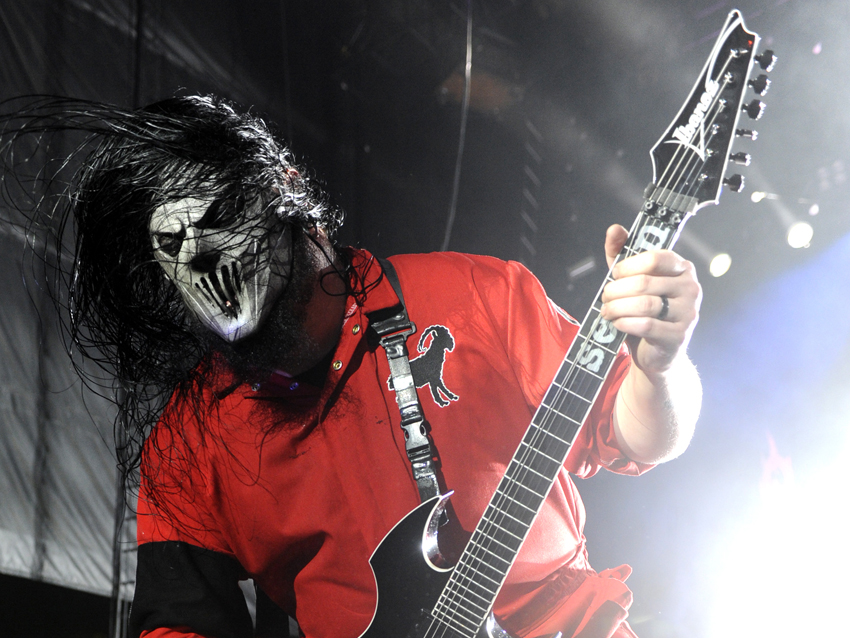
Digital vs analogue
So, we’ve seen the gear that Jim and Mick hold dearest, but how about modelling? Have they fallen for the brave new world of digital?
Jim: “I’m a fan of modelling for demoing and writing on the road. For playing live I have a Fractal, which I like a lot, and I think you can get really involved with it. It can drive you mad because there’s so much you can do with it.
"It’s not my favourite to use. I would never replace tube amps with modelling - it just feels different. You can get damned near close to the sound, but after a while you get digital fatigue with your ears and it just feels different.”
Mick: “It’s been a while since we’ve been in the studio and things are advancing so fast, but I don’t think you’ll ever replace tubes because tubes are tubes and there’s a sweetness that you’ll never get [with modelling]. But I have an Axe FXII and it seems so responsive to touch.
"It’s a whole different ball game. I haven’t really scratched the surface on that, though; it’s something I have at home and look forward to fuckin’ with some more. It’s impressive at conversation level - I live in a loft so I can’t crank my shit up or the police come beating on my door.
"That’s great for a musician, huh?! I have noticed that it translates really well, though. And like I said, I saw Coheed use them and if I hadn’t known they were using them I wouldn’t have guessed. Who knows: next time in the studio we might - gasp - use a digital board.”
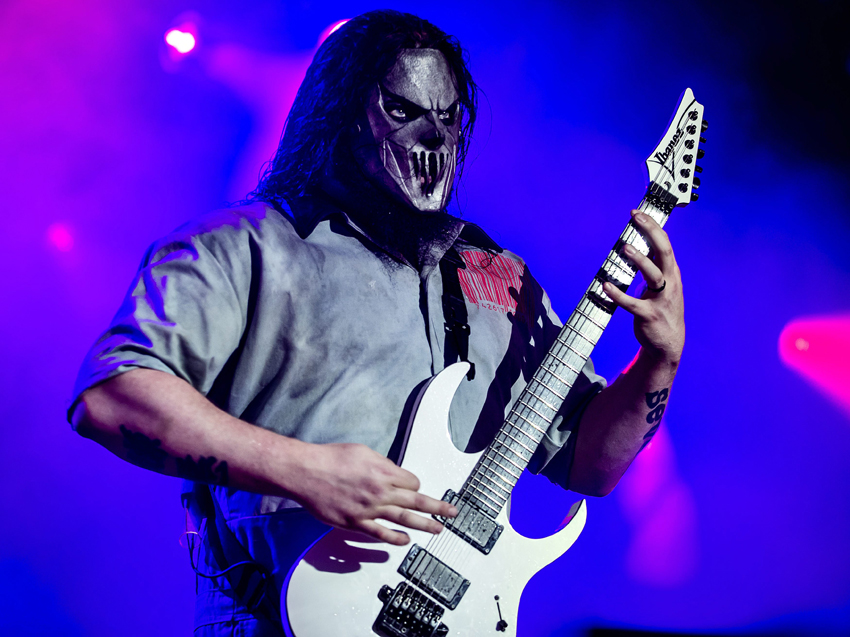
Recording - Mick
Speaking of digital, as a band that recorded its first album to tape but then came to prominence in the Pro Tools era, Jim and Mick have plenty to say about the pros and cons of both.
Mick: “Time wasn’t tight [on the first Slipknot album] but we had about two months. I banged everything out in two or three days - all of my basic tracks and overdubs. The second album took a little bit longer - we were still using two-inch tape on those albums. It was, ‘Hold on, missed the punch'.
"Things definitely changed once we started using Pro Tools. We still use sweet ass analogue stuff now, though. As long as you’ve got a great engineer, and we always did, it doesn’t want to make you blow your brains out or anything - it just takes a little longer.
“You’d have to do side-by-side comparison. You couldn’t just say 'here is what we recorded way back', because mastering has advanced so much. You’d have to do a track on tape and then do the same on digital and see if you can tell the difference.
"I’d be really interested to do that, actually, a completely blind test. It would be a band decision, but I wouldn’t be against using tape again. But then things now are so much easier and we don’t ever just copy and paste. Some bands will record one riff and then just go, ‘print, print, print’.
"But you can hear that. We don’t even play to a click. We’re together, amped up. Joey will slow it down, speed it up. We would never just, ‘tick, tick, tick’, because then you sound like that. Even though we’ve been using digital we’re still using analogue up front - there’s that human element to it.
"Digital gives great control, and when I’m tracking I can physically see where the crack of the snare is. It’s almost like you’ve got a metronome without having one. It was 2007 or 2008 when we were last in the studio, so I’m sure that shit has changed and come on leaps and bounds since then.”

Recording - Jim
Jim: “The first time Pro Tools entered our lives was on the Iowa record. We were recording to tape but we brought in a Pro Tools guy. It took forever for him to set up - it was a giant process.
"Everything since Iowa has been Pro Tools. Everything else is still analogue, but everything goes into Pro Tools. I prefer analogue.
"But, for instance, the first Stone Sour record was done to tape and the engineer burned it in too hard, at like a plus nine, which if you burn it in that hot it doesn’t give the guy mastering anywhere to go. If you listen to that record really close - like in Idle Hands - you’ll hear distortion from it being burned so hot.
“When you’re recording an album the point is to catch a vibe. There are producers and bands that go for the perfect sounding record, but we’re humans - we don’t listen for perfection. You have to have things a little off to be pleasing to the ear.
"If you have this one section, maybe a measure of a verse line, that is perfect and then you just copy and paste it, that's just wrong. Same thing with auto correct on the vocals. We learned from Ross [Robinson] to capture an energy. If you want something perfect you should listen to a different genre of music.”
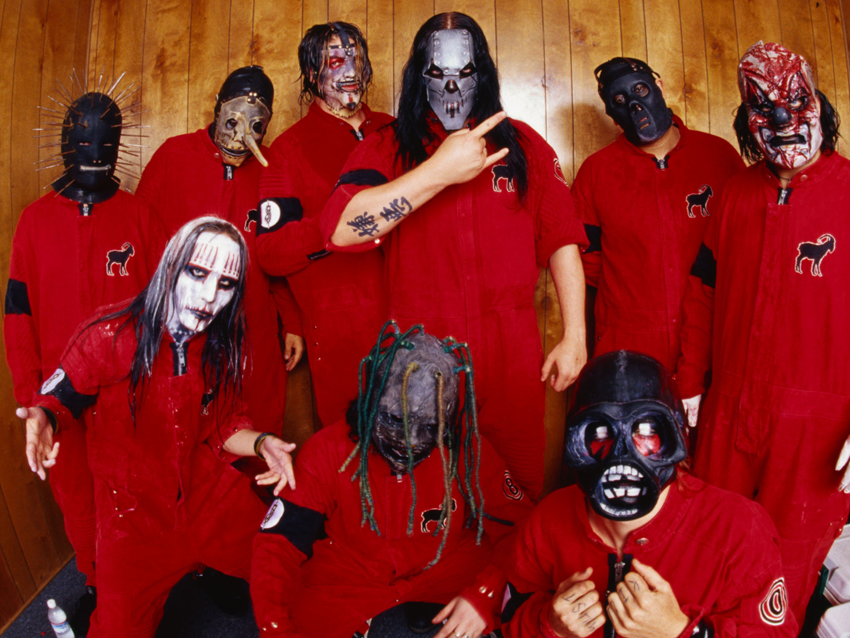
The guys behind the scenes
You don’t just need a great band to make a great album, y’know. As Mick explains, you need the right guys on the board, too.
Mick: “When you’ve got a producer like Ross, he used Chuck Johnson to engineer the first [Slipknot] album and he was awesome. We had Mike Fraser do the second album; he was awesome. Those guys are great, and they will put their stamp on it, too.
"Chuck would have everything slammed into the red. Ross had a lot to do with the way things sounded, but ultimately, those were Chuck’s knobs. A lot of people don’t take that into consideration when they hear an album - there is so much that goes on on the production side.
"Nothing is a one-man show - so much goes into it. What’s crazy is that we think we have it done, then send it to be mastered and get it back and think, ‘Woah, no!’. We’ll listen back and say, ‘Let’s have less of this, more of this - what the fuck were we thinking?!’.
"It’s a complicated process. You might have done demo tapes but sending it off to a mastering studio is a whole new thing. It’s expensive, too - they find a way to bill the fuck out of you!”
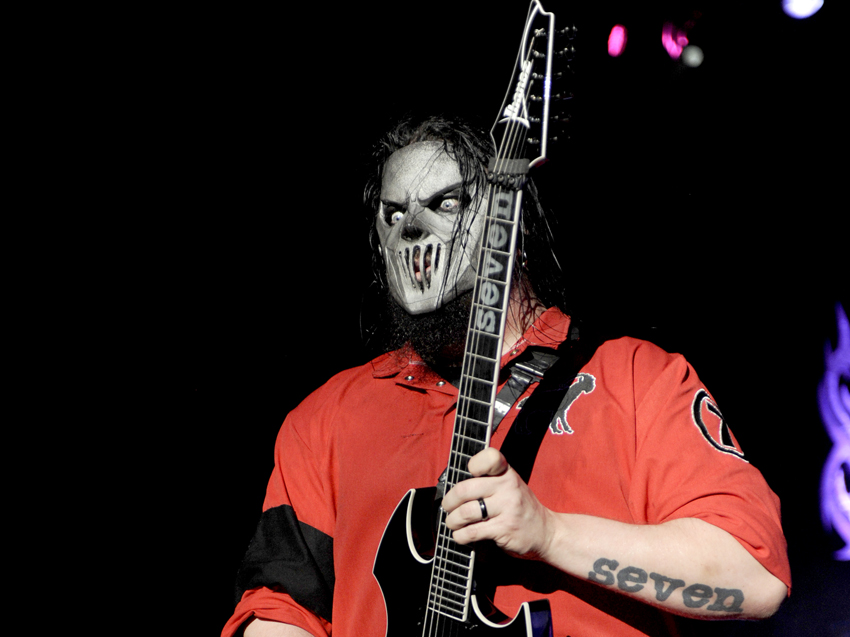
The riffs
Where else could we possibly end this mammoth Slipknot interview than by turning to their mega riffs?
Mick: “Some riffs are more fun to play than others. I always love playing the hidden song from our first album. I get to downpick real fast and that to me is fun. Plus, it’s heavy.
"Metabolic off the Iowa record is one that I’ve always loved, but we’ve never played that live. I would have to sit back down and work that one out because we haven’t played it once since we tracked it.
"Gematria or All Hope Is Gone off All Hope Is Gone, they are both fun to play. But then none of our songs are tedious, at it’s worst I’ve got no problem with it! It’s fun on stage to get on autopilot and slam.”
Rich is a teacher, one time Rhythm staff writer and experienced freelance journalist who has interviewed countless revered musicians, engineers, producers and stars for the our world-leading music making portfolio, including such titles as Rhythm, Total Guitar, Guitarist, Guitar World, and MusicRadar. His victims include such luminaries as Ice T, Mark Guilani and Jamie Oliver (the drumming one).
